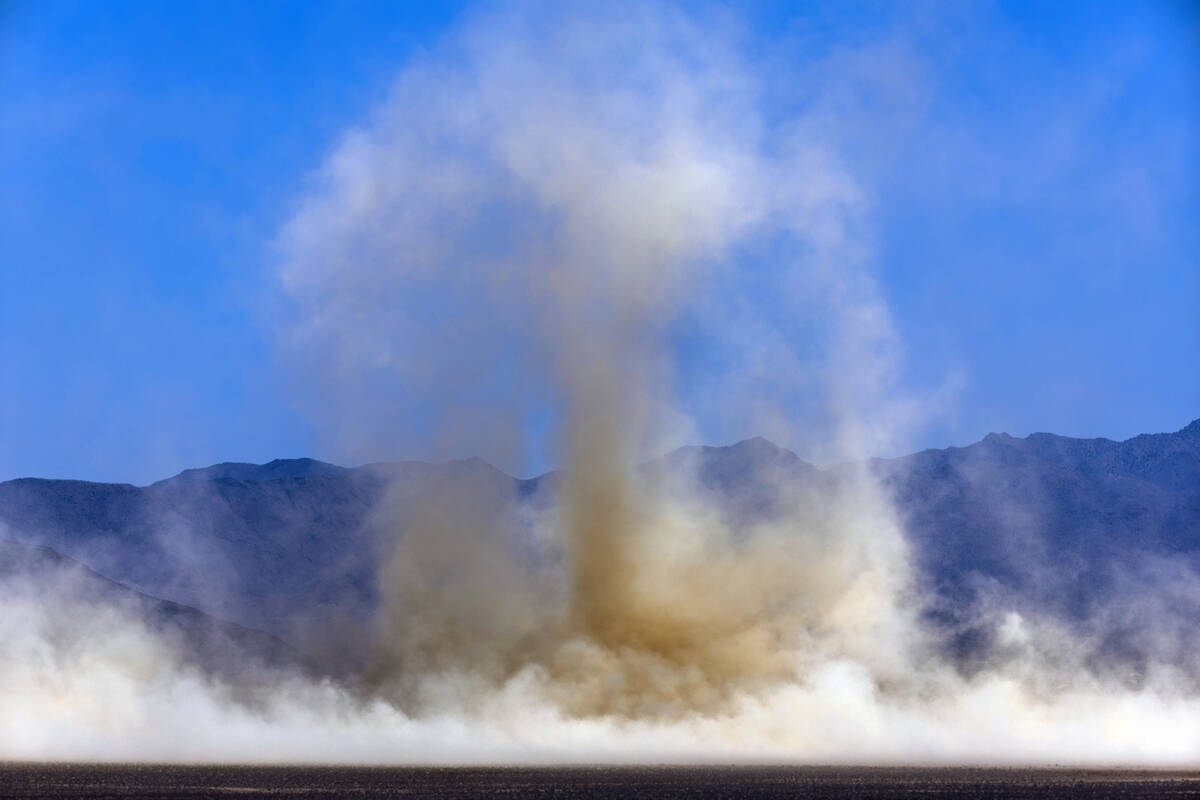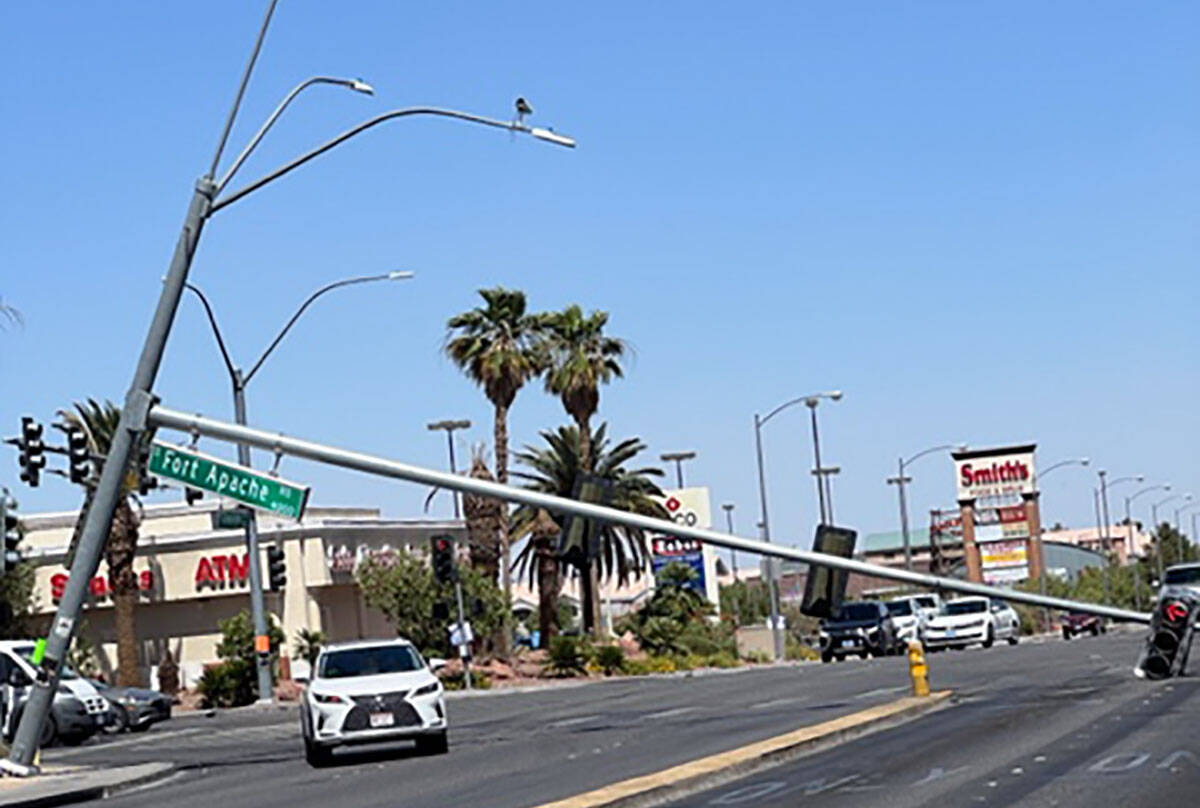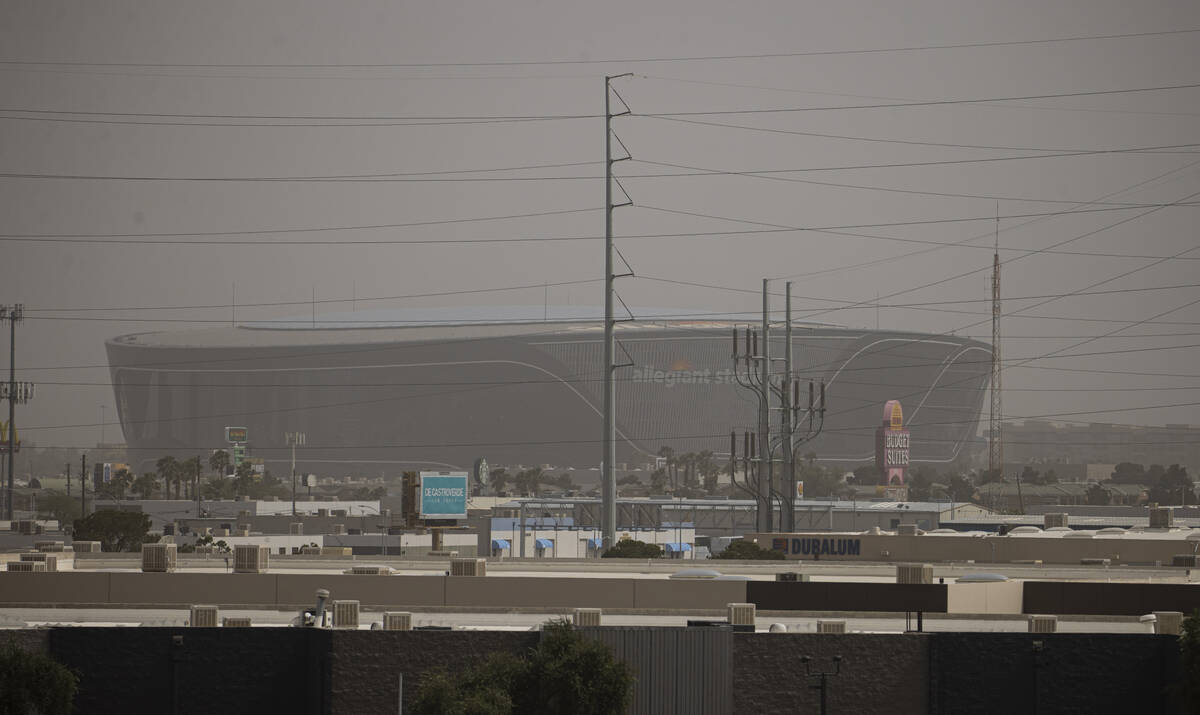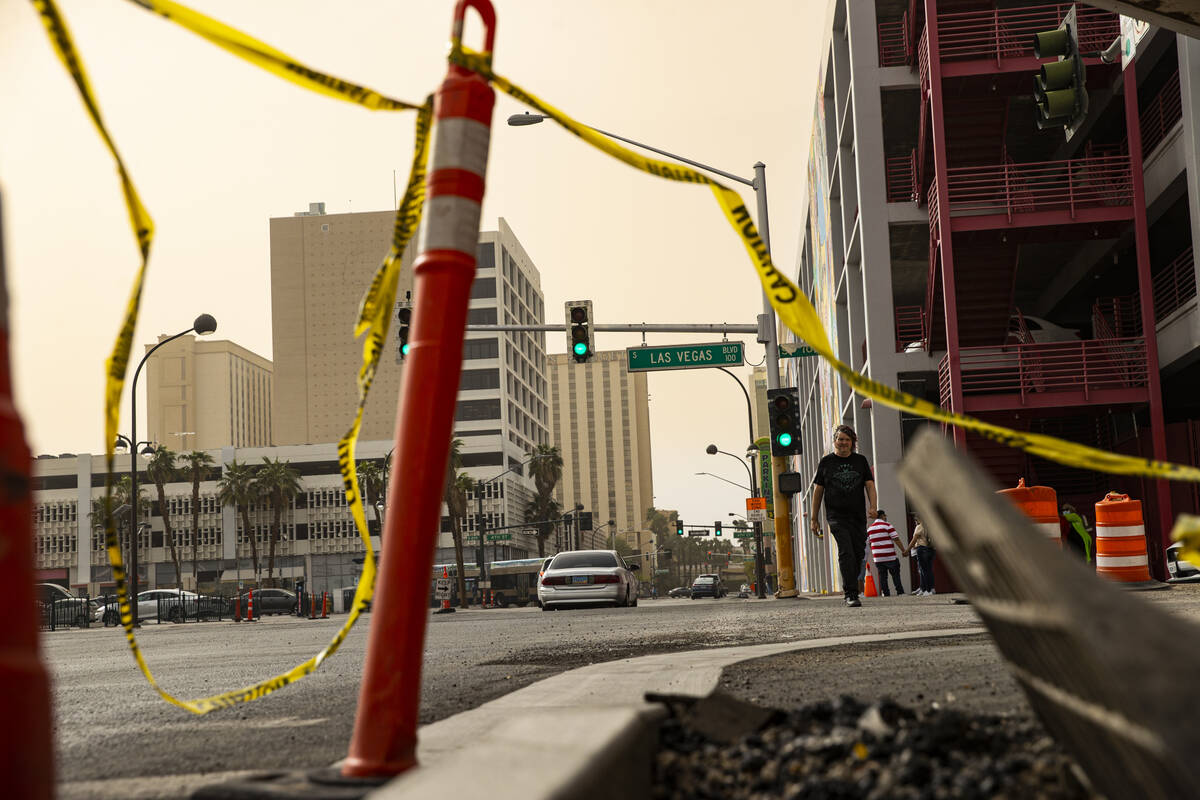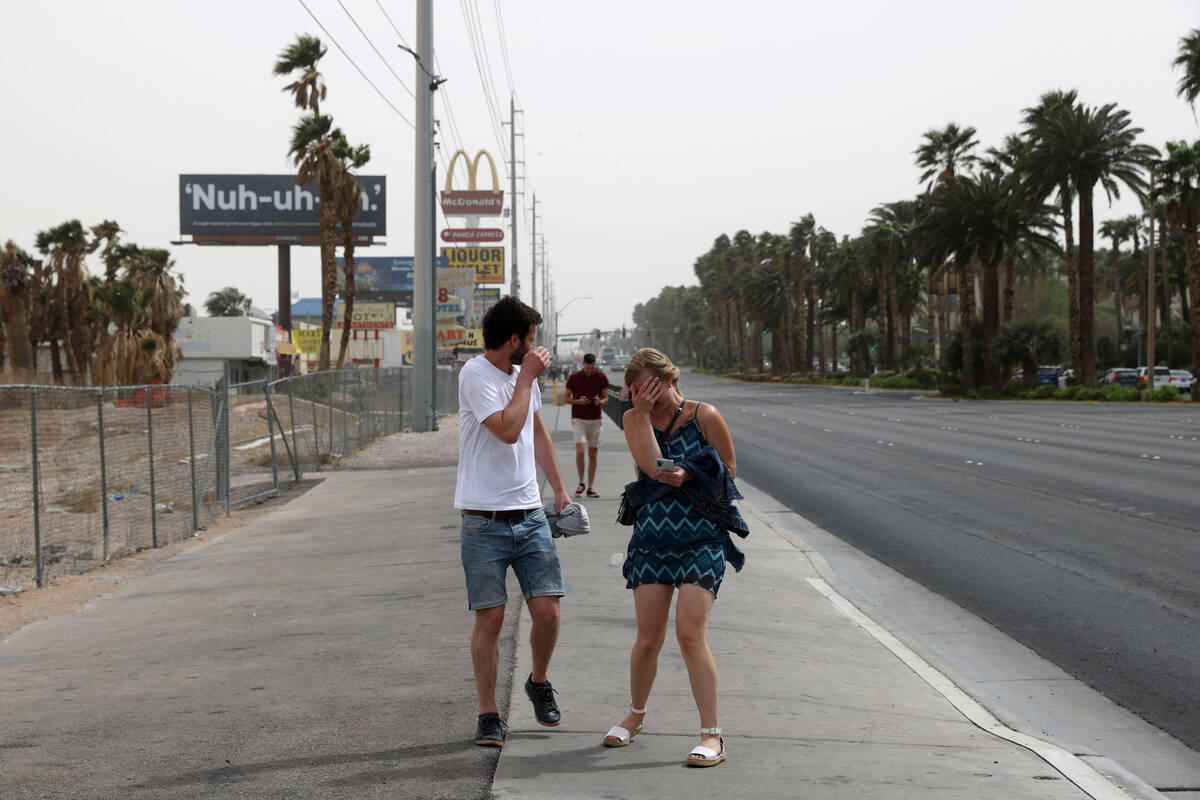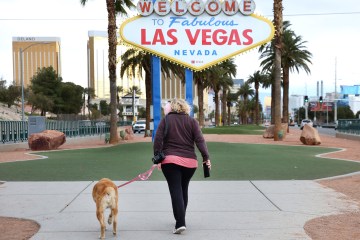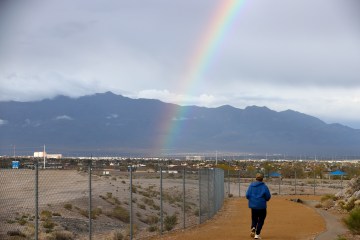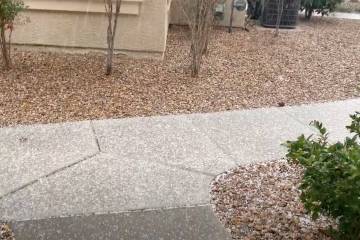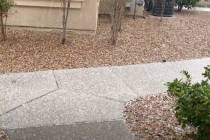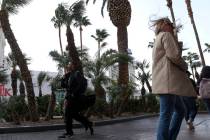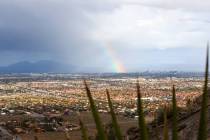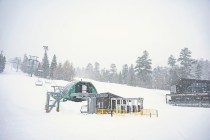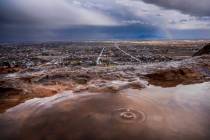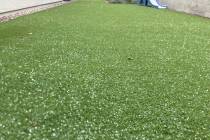Has Las Vegas been abnormally windy this year? See what experts say.
Everyone in Vegas seems to have a wind story this year.
Maybe it’s a gust knocking down an unsuspecting pedestrian, a set of patio furniture ending up in a neighbor’s yard or dust covering your car.
But an analysis of National Weather Service data shows it was surprisingly only a little breezier than the normal spring with the average wind speed between March and May on par with the past 18 years.
Wind gusts between March and May, however, stood out. Daily maximum wind gusts averaged 31 mph — 3.3 mph higher than the 18-year average — and there were four times the number of days with gusts over 50 mph.
On June 12, winds gusting to 67 mph hit the Las Vegas Valley and downed a stoplight.
Fire danger has also increased. The NWS has issued 27 red flag warnings so far this year, up from 17 in 2021.
Meteorologist Trevor Boucher said wind is usually the “most common concern” we have here in the Las Vegas area, more common even than heat advisories. “We issue quite a bit more wind products than any other product.”
Areas like Summerlin and Red Rock Canyon on the west side of the valley are some of the most prone to windy conditions due to their proximity to the Spring Mountains.
Under certain conditions, dry air coming over the top of the mountains can quickly pick up speed as it moves down the other side. Areas closest to the mountainside experience the brunt of these winds before they encounter too many buildings, trees and other sources of friction that can cause them to slow down. Wind gusts up to 45 mph were recorded near Kyle Canyon in the Spring Mountains last Saturday.
“I would say Red Rock Canyon is one of the prime examples of the windiest places we have in the county,” Boucher said. Wind gusts in the area frequently top 50 mph, fast enough to damage powerlines and break tree branches.
Wind direction also determines the gustiest areas of Clark County on a given day. For example, when the wind comes from the north and down through the Colorado River Valley, towns like Laughlin may be the windiest.
Twelve wind advisories have been issued from Jan. 1 through June 7. By comparison, from 2018 through 2021, the NWS issued an average of eight wind advisories for the Las Vegas Valley in that time. Likewise, there have been two high wind warnings issued for the valley in 2022 — the average number from 2018 through 2021 is 1.25 by June 7.
High wind warnings are issued for the Las Vegas Valley when meteorologists expect sustained winds of 40-plus mph or gusts above 58 mph. They issue wind advisories when they expect wind gusts above 40 mph or sustained wind speeds of 30 to 39 mph for at least three hours.
“At 40 mph,” Boucher said, “that will pretty efficiently move your trash cans and things on your porch that aren’t secured.” Winds in the 30 to 39 mph range can cause whole trees to sway and make walking inconvenient.
Combined with the heat, residents may feel like they’re living in a sandy, sweltering air fryer whenever a windy day rolls around.
Wind patterns in the valley
March, April and May are generally the windiest months of the year for the region, according to Boucher.
A lot of that boils down to the changing seasons.
The spring is a transitional time when the jet stream begins moving northward, causing disturbances in atmospheric air that lead to the frequent windy cold fronts we see in the spring.
At the same time, longer days and more sunlight cause surface air temperatures to increase, creating more turbulent air.
A silver lining to these cold fronts — like the one this past weekend — is a relief from the heat. The temperature in the Vegas area fell from a high of 106 degrees on June 16 to 88 degrees on June 19 as the front moved in.
Boucher said the temperature drop associated with a cold front is almost always associated with wind in the valley. “If I knew nothing about the weather forecast, and saw that my colleagues were forecasting a high of 108 on a Thursday and a high of 92 on Sunday, I’d think we must be having wind somewhere in there.”
As the summer progresses, cold fronts become weaker as the southwest settles into its monsoon season and a more consistent high-pressure air mass settles over the region.
In this season, which began June 15 and runs through Sept. 30, strong winds are more often associated with localized afternoon thunderstorms than regional cold fronts. These winds tend to be more short-lived and affect a smaller area than the spring’s frontal winds.
They can still cause severe damage, however. On Aug. 8, 1989, winds associated with a storm reached speeds of 90 mph — the highest recorded wind speeds in Vegas — at what is now Harry Reid International Airport, causing millions of dollars in damage in only about 20 minutes.
Public health concerns
Beyond the direct damage that high winds can cause, winds pose other public health threats by spreading dust and smoke through the air. Wind-related public health concerns associated with winds are also exacerbated by the ongoing drought.
Stephanie McAfee, Nevada state climatologist, said that when it hasn’t rained in a while, winds can pick up dust as they move across the valley, reducing air quality and potentially triggering dust storms. If it’s bad enough, visibility can be reduced, making it difficult to see and dangerous to drive.
Windy conditions in hot, drought-stricken Nevada also present a fire hazard. The NWS in Las Vegas frequently issues red flag warnings to indicate that a combination of low humidity, strong winds and dry vegetation pose a significant fire threat.
“Brisk” southwest winds escalated a fire on June 19 in the city, ultimately burning at least 10 buildings and injuring one, according to a Las Vegas Fire & Rescue spokesman.
The smoke from fires can pose serious health concerns if it’s low enough in the sky. “I’m sure that anyone who’s been in the Las Vegas Valley for the past two years can remember a day when it was brown because of the smoke,” Boucher said.
On smoky days, most people should avoid strenuous activities and limit exposure as much as possible. If the smoke danger is severe enough, officials may caution people to stay indoors, close doors and windows and use an air filter to remove particulate matter from the air.
People with asthma or another respiratory or cardiovascular disease, young children, pregnant women and the elderly are especially sensitive to wildfire smoke and should be diligent about limiting their exposure.
Clark County monitors air quality so people can stay informed about air quality.
Ultimately, while the NWS is good at predicting high winds in a broad sense, wind can be hard to pin down.
“We’re entering a paradigm of people wanting information on demand,” Boucher said. “But it’s super complex to tell people exactly the maximum wind gust they’re gonna get at a given time and location.”
Even when high winds are forecasted, he added, “Is it going to be 62 mph wind or 67 mph winds? That kind of information is extremely difficult to pinpoint.”
Have questions about science? Send them to me at cpoore@reviewjournal.com.
Colton Poore is a 2022 Mass Media reporting fellow through the American Association for the Advancement of Science. Email him at cpoore@reviewjournal.com or follow him on Twitter @coltonlpoore




